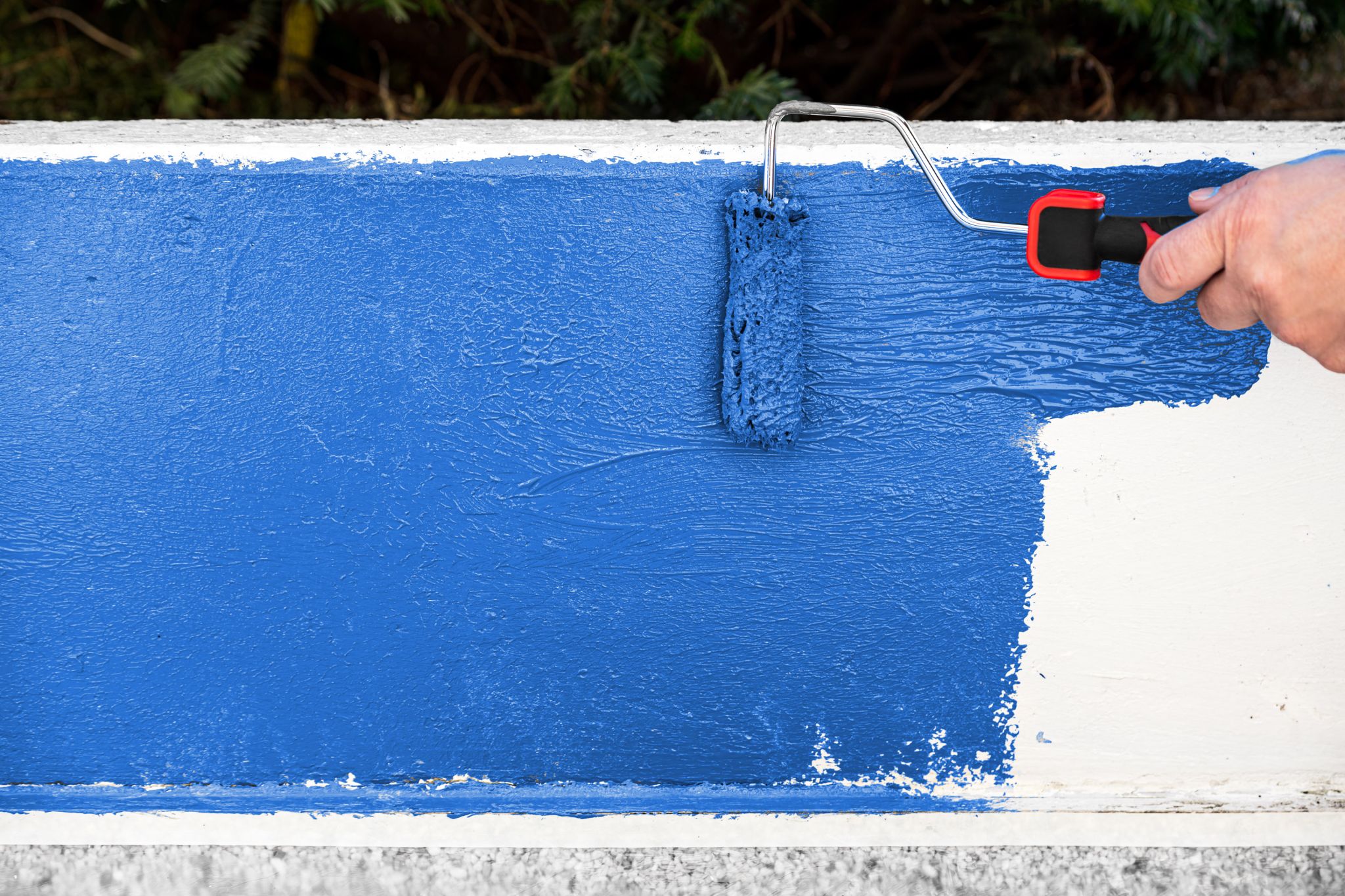Applying a cement sealer may seem tough. But it’s easier than you think.
Cement sealers protect and enhance your concrete surfaces. They guard against moisture, stains, and wear. Whether it’s your driveway, patio, or basement floor, sealing can extend the life of your cement. This easy DIY guide will show you each step.
No need for professional help. With the right tools and a bit of time, you can achieve great results. We’ll cover everything from cleaning the surface to applying the sealer. Ready to make your cement look new and last longer? Let’s dive into the process. You’ll be surprised at how simple and rewarding it can be.
Choosing The Right Cement Sealer
Applying a cement sealer can protect and enhance your surfaces. Clean the area, apply the sealer, and let it dry. Sealers add durability and a polished look to your cement projects.
Selecting the perfect cement sealer is crucial for a successful DIY project. The right sealer protects your cement and enhances its appearance. It also extends the lifespan of your cement surface. But with many options available, making a choice can be challenging.
Types Of Sealers
There are two primary types of cement sealers: penetrating sealers and film-forming sealers.
Penetrating sealers soak into the cement and protect from within. These sealers are ideal for outdoor surfaces. They resist water, stains, and chemicals.
Film-forming sealers create a protective layer on the surface. They are best for indoor areas. They provide a glossy or matte finish and enhance the color of the cement.
Factors To Consider
Several factors influence your choice of cement sealer.
Consider the location of your cement surface. Is it indoors or outdoors? Outdoor surfaces need sealers that withstand weather conditions.
Think about the level of traffic the area will experience. High-traffic areas need more durable sealers.
Evaluate the appearance you desire. Do you want a natural look or a glossy finish? Different sealers offer varying levels of shine.
Check the ease of application. Some sealers are easier to apply than others.
Lastly, consider the drying time. Faster drying times can speed up your project.
By considering these factors, you can choose the best cement sealer for your needs. Happy sealing!

Credit: www.houselogic.com
Gathering Necessary Tools
Before you start sealing your cement surfaces, you need to gather the right tools. Having the proper equipment ensures a smooth and efficient process. This guide will help you prepare by listing essential tools and optional accessories. Proper preparation makes your DIY project easier and more successful.
Essential Equipment
- Protective Gear: Gloves, safety glasses, and masks are crucial. They protect your skin, eyes, and lungs from harmful chemicals.
- Cleaning Tools: Use a broom, vacuum, or pressure washer. Clean surfaces ensure better adhesion of the sealer.
- Mixing Bucket: A clean bucket helps in mixing the sealer properly. Ensure it is large enough to hold the sealer mixture.
- Paint Roller: A roller with an extension handle helps cover large areas quickly. Choose a roller suitable for rough surfaces.
- Paint Brush: Use a brush for edges and corners. It ensures even application in hard-to-reach areas.
- Drop Cloths: Protect nearby surfaces from spills and splatters. Lay them down before starting the application process.
Optional Accessories
- Sprayer: A sprayer can provide an even coat of sealer. It is especially useful for large areas.
- Stirring Stick: A stick helps mix the sealer thoroughly. Ensure the sealer is well-mixed before application.
- Measuring Cup: Accurate measurements are key for mixing. Use a measuring cup to follow the sealer’s instructions.
- Knee Pads: Protect your knees while working on the ground. They offer comfort during the application process.
- Painter’s Tape: Use tape to mark boundaries. It ensures clean lines and prevents accidental spreading.
By gathering these tools, you set the stage for a successful sealing project. Proper preparation saves time and effort. It also ensures a professional-looking finish on your cement surfaces.
Preparing The Surface
Applying a cement sealer requires a well-prepared surface. Proper preparation ensures the sealer bonds effectively. This step involves cleaning the area and repairing any cracks or holes. Let’s dive into each part.
Cleaning The Area
Start by removing any dirt or debris. Use a broom or a leaf blower. For stubborn stains, scrub with a stiff brush and mild detergent. Rinse the area with clean water. Allow it to dry completely. A clean surface makes the sealer adhere better.
Repairing Cracks And Holes
Inspect the cement for cracks or holes. Small cracks can grow if not fixed. Use a cement patching compound. Follow the manufacturer’s instructions. Fill the cracks and smooth them out. For larger holes, use a concrete mix. Let the repairs dry thoroughly. This creates a smooth, even surface for the sealer.
Protecting Surrounding Areas
Applying a cement sealer can protect and enhance your surfaces. Yet, it’s crucial to safeguard the surrounding areas during the process. This ensures a clean and precise job, avoiding damage to adjacent surfaces.
Covering Adjacent Surfaces
Before you start, cover any nearby surfaces. This includes walls, doors, and windows. Use plastic sheets or drop cloths. This will prevent unwanted splashes and spills. Secure the coverings with tape or weights.
Using Painter’s Tape
Painter’s tape is essential for straight and neat edges. Apply the tape along the borders of the area you are sealing. Press down firmly on the edges. This will stop the sealer from seeping underneath. Remove the tape once the sealer is dry.
Mixing The Cement Sealer
Mixing the cement sealer is a crucial step in your DIY project. Proper mixing ensures a smooth, even application. This section will guide you through the essential steps to get it right.
Reading Instructions
Always start by reading the instructions on the cement sealer packaging. Instructions may vary between brands. Follow them carefully to achieve the best results.
Most cement sealers come with detailed instructions. These instructions provide the exact ratios of water to sealer. Keep this ratio precise.
Proper Mixing Techniques
To mix the cement sealer correctly, you will need a clean bucket and a mixing tool. A drill with a mixing paddle attachment works best.
- Pour the required amount of water into the bucket.
- Slowly add the cement sealer powder.
- Start mixing at a low speed to avoid splashing.
- Gradually increase the speed until the mix is smooth.
The mixing process should take about 3-5 minutes. Ensure the mixture has no lumps and is consistent.
| Mixing Time | Consistency Check |
|---|---|
| 3-5 minutes | No lumps, smooth texture |
Use a clean stick or tool to check the consistency. The mixture should be smooth and flow easily.

Credit: www.youtube.com
Applying The First Coat
Apply the first coat of cement sealer evenly with a brush or roller. Ensure full coverage for a smooth finish. Let it dry completely before adding another coat.
Applying the first coat of cement sealer is crucial for a durable finish. The initial layer sets the foundation for the overall project. It ensures the surface is well-protected and long-lasting. In this section, we’ll guide you through applying the first coat effectively.
Using A Roller Or Brush
Choose a roller or brush for applying the sealer. A roller covers large areas quickly. It’s perfect for floors and driveways. A brush helps with edges and tight corners. It provides precision. Both tools are effective for the first coat. Dip the roller or brush into the sealer. Apply it evenly across the surface.
Ensuring Even Coverage
Even coverage is key for a smooth finish. Start from one corner. Work your way across the surface. Overlap each stroke slightly. This prevents gaps. Check for missed spots as you go. Adjust as needed. Apply a thin, consistent layer. Avoid puddles or thick spots. Let the first coat dry completely. This ensures a strong bond for the next layer.
Allowing Proper Drying Time
Allowing proper drying time is crucial when applying a cement sealer. Proper drying ensures the sealer adheres well and provides maximum protection. Rushing this step can lead to poor results. Let’s dive into the details of how to allow proper drying time.
Recommended Drying Period
The drying period for cement sealer can vary. Most sealers need at least 24 to 48 hours to dry. Check the product label for specific recommendations. The drying time can depend on factors such as temperature and humidity.
| Condition | Recommended Drying Time |
|---|---|
| Warm and Dry | 24 hours |
| Cool and Humid | 48 hours or more |
Checking For Complete Dryness
How do you know if the sealer is completely dry? Here are simple steps:
- Touch the surface lightly with your fingers.
- If it feels tacky or sticky, it needs more time.
- Check for any discoloration or wet spots.
- Perform a water drop test. If water beads up, it’s dry.
Be patient. Allowing the sealer to dry fully ensures a durable and long-lasting finish.
Applying Additional Coats
Applying additional coats of cement sealer strengthens the protection of your surface. It ensures a long-lasting finish, preventing wear and tear. Follow these steps for a smooth and even application.
When To Apply Second Coat
Wait for the first coat to dry completely. Typically, this takes 24 hours. Check the manufacturer’s instructions for exact timing. The surface should feel dry to the touch. No tackiness should remain.
Apply the second coat in the same manner as the first. Use even strokes with a brush or roller. Ensure complete coverage without pooling. A thin, even coat works best.
Final Touches
Allow the second coat to dry thoroughly. This may take another 24 hours. Avoid walking or placing objects on the surface during this time. Patience is key for a smooth finish.
Once dry, inspect the surface for any missed spots. Touch up any areas as needed. A consistent, even coat provides the best protection.
Store any leftover sealer properly. Keep it in a cool, dry place. Proper storage ensures it remains usable for future touch-ups.
Maintenance Tips
Maintaining your cement sealer ensures it lasts longer and keeps looking great. Proper upkeep is simple and can save you money on repairs. Here are some key maintenance tips you should follow.
Routine Cleaning
Regular cleaning helps prevent dirt and stains from damaging the sealer. Use a soft-bristle brush and mild detergent. Scrub the surface gently to remove dirt and debris. Rinse with clean water and let it dry completely.
Avoid using harsh chemicals or abrasive tools. These can damage the sealer and the cement underneath. Stick to gentle cleaning methods for the best results.
Reapplying Sealer
Over time, the sealer may wear off due to weather and foot traffic. Check the condition of your sealer every 1-2 years. Reapply a fresh coat if you notice any dull spots or wear.
Start by cleaning the surface thoroughly. Let it dry before applying the new sealer. Follow the same steps you used during the initial application. This ensures an even and effective layer of protection.
By following these tips, you can keep your cement sealer in top shape. This will help maintain the appearance and durability of your cement surfaces.
Frequently Asked Questions
What Is A Cement Sealer?
A cement sealer is a protective coating applied to concrete surfaces. It helps to prevent damage from water, stains, and chemicals. Sealers enhance the durability and longevity of concrete.
Why Should I Use A Cement Sealer?
Using a cement sealer protects your concrete from damage. It prevents water, stains, and chemicals from penetrating the surface. This enhances the lifespan and appearance of your concrete.
How To Prepare Concrete Before Sealing?
Clean the concrete surface thoroughly. Remove any dirt, grease, or old sealers. Ensure the surface is dry before applying the sealer.
Can I Apply Cement Sealer Myself?
Yes, you can apply a cement sealer yourself. Follow the manufacturer’s instructions carefully. Use the appropriate tools and safety gear for the best results.
Conclusion
Completing your cement sealer project can feel rewarding and fulfilling. With these simple steps, you can protect your cement surfaces with ease. Remember to follow the drying times and safety guidelines. Your hard work will ensure a durable and long-lasting finish.
Enjoy your newly sealed cement and the peace of mind it brings. Happy sealing!






















